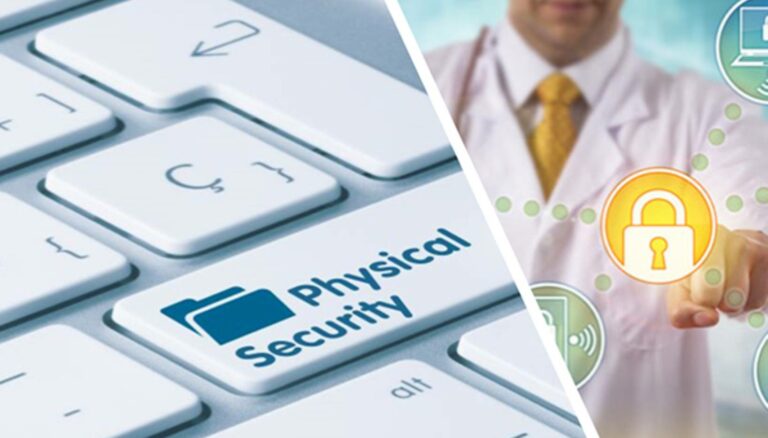In 2024, the transformation of healthcare security will continue to accelerate. From the rise of cloud-based platforms to the adoption of artificial intelligence, healthcare security professionals are adopting these technologies to improve their physical security capabilities and meet today’s security challenges.
To stay proactive and keep up with these changes, security professionals should examine the trends reshaping their industry and adopt proactive strategies to address them.
Here are the top five physical security digital innovations that healthcare security leaders should consider in 2024 and beyond!
Table of Contents
- Leveraging AI to Improve Security at Healthcare Facilities
- Embracing remote video surveillance and analytics
- Streamlining Access Control and Visitor Management
- Adopting a Data-Driven Approach to Physical Security
- Prioritizing Cloud-Based Solutions and Digital Transformation
1. Leveraging AI to Improve Security at Healthcare Facilities
AI’s transformative influence extends to every industry, and healthcare security professionals are embracing this new era. Artificial Intelligence plays a pivotal role in automating tasks, enhancing decision-making, and boosting the efficiency and effectiveness of security operations.
Here are some real-world examples of AI applications in healthcare security:
Smart Access Control
AI-driven access control systems provide a dynamic and adaptable way to manage facility access. For example, AI-powered facial recognition and biometric authentication can identify and authenticate users, while real-time anomaly detection using machine learning algorithms can detect suspicious activity.
Predictive Maintenance
AI predicts when security equipment and systems require maintenance or replacements, reducing downtime and ensuring the security infrastructure is always in top form. With SiteOwl, you can stay on top of ongoing security system deployments and maintenance work in real-time, making it easy to keep your security systems in optimal condition.
Behavior Analysis
AI-powered behavior analysis tools monitor and assess patient and staff behavior, quickly identifying deviations from standard patterns that might signal security risks. These tools can be used to improve the safety and security of healthcare facilities in a number of ways without the need for additional security personnel.
AI is transforming security rapidly, yet healthcare lags due to the lack of user-friendly tools. SiteOwl fills this gap, offering an intuitive platform for easy design, installation, and management of security systems.
2. Embracing remote video surveillance and analytics
Remote video surveillance and analytics solutions empower healthcare organizations to monitor their facilities from afar centrally. As remote monitoring gains widespread acceptance, mobile apps are on the rise, offering users the complete 360-degree, high-definition surveillance experience from their smartphones or tablets.
In the healthcare realm, privacy and HIPAA regulations are paramount, but real-world applications are already in action. For instance, AI-powered video analytics in surveillance systems can promptly identify distress signals and alert staff. Beyond detecting and alerting anomalies, AI-driven video analytics can serve in continuous monitoring as well.
- Waiting rooms and corridors for patient falls.
- Medication dispensing areas to ensure compliance.
- Staff activities to ensure adherence to HIPAA and patient privacy regulations.
- Public areas to keep unauthorized individuals out of restricted areas.
Currently, 23% of U.S. healthcare executives find AI effective in improving clinical outcomes, with expectations that this number will grow substantially in the coming years.
3. Streamlining Access Control and Visitor Management
Healthcare facilities face a delicate balance between safeguarding patient privacy and controlling access to restricted areas. They have a legal and ethical duty to protect patient information and limit access to authorized personnel. Simultaneously, they must manage access to ensure safety in critical areas like emergency departments, intensive care units, and operating rooms. Some of the more innovative solutions used to control access to patient areas include door locks,
Streamlining access control and visitor management in healthcare facilities can help to improve security, efficiency, and patient care. There are several ways to streamline these processes, including:
Integrated systems enable healthcare security teams to combine access control and visitor management into a single platform, automating tasks like badge generation and visitor tracking.
Mobile technology such as mobile credentials enables healthcare staff to easily manage access and visitor processes remotely, authorizing restricted area entry and tracking visitors.
Self-service kiosks allow security teams to simplify visitor check-in with kiosks, allowing visitors to check in, provide ID, and receive badges, freeing up staff.
Biometric authentication enhances security and convenience with fingerprint scanners and facial recognition for access control and visitor management.
Things are moving quickly, and by 2024, Gartner expects 50% of new system deployments in the cloud will be based on a cohesive cloud data ecosystem rather than manually integrated point solutions.
4. Adopting a Data-Driven Approach to Physical Security
Healthcare organizations possess a treasure trove of data from their systems and processes. However, while many facilities harness data for operational improvements, the significance of physical security in safeguarding this data often goes unnoticed.
Here are specific examples of data-driven approaches in healthcare facilities:
- Video Surveillance Insights: Some facilities use data from video surveillance systems to pinpoint unauthorized access areas and assess patient security risks.
- Access Control Prioritization: Access control data guides security staff in inspecting critical facility areas and optimizing security resource allocation.
- Patient Safety through Surveillance: Video surveillance systems help identify patients at risk of falling, enabling tailored interventions to prevent incidents.
With SiteOwl, healthcare security teams can seamlessly integrate and manage their physical security infrastructure, promoting a data-driven approach to safeguarding both patients and sensitive information.
5. Prioritizing Cloud-Based Solutions and Digital Transformation
Cloud-based security solutions offer a number of advantages over on-premises solutions, such as scalability, flexibility, and cost savings. Healthcare organizations are increasingly moving their security infrastructure to the cloud to take advantage of these benefits.
In 2024, most healthcare organizations will have moved at least some of their security infrastructure to the cloud. The most common use cases include:
- Video surveillance. Cloud-based video surveillance solutions enable healthcare organizations to manage their infrastructure and resources more effectively,
- Access control. Cloud-based access control solutions allow healthcare organizations to manage their access control infrastructure and resources more effectively,
- Visitor management and credentialing. Cloud-based visitor management and credential credentials solutions allow healthcare organizations.
- Lifecycle management of physical assets. Cloud-based lifecycle management solutions allow healthcare organizations to manage their physical infrastructure and resources more effectively.
Prioritizing digital transformation and cloud solutions empowers healthcare facilities to enhance patient care, data security, and efficiency. SiteOwl, a leader in physical security lifecycle management, facilitates this transition, ensuring a secure and efficient environment.
Optimize Healthcare Physical Security with SiteOwl
In 2024, healthcare facilities will continue prioritizing digital transformation and cloud solutions for patient care, data security, and efficiency. While adopting cloud solutions is key to this transformation, challenges must be overcome. Embracing these changes keeps organizations current, enhances patient care, and secures data.
Facing the healthcare industry’s security challenges, SiteOwl provides a comprehensive solution. Our lifecycle management tools streamline security processes, maximizing facility and personnel safety.
Request a demo today to explore how SiteOwl aids in your security digital transformation, elevating your security to its highest level.

Su Subburaj
Su is SiteOwl's CMO and leads all marketing and communications. Su has extensive strategy and management consulting experience and previously consulted for 3Sixty Integrated where she gained an in-depth understanding of digital transformation challenges in the physical security industry. When not working on strategies to expand SiteOwl's footprint, Su enjoys bad karaoke, weightlifting and traveling.
![Physical Security Outlook 2024 [Healthcare] Five Digital Trends Shaping Healthcare Physical Security](https://getsiteowl.com/wp-content/uploads/2024/10/healthcare.webp)





